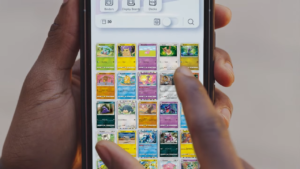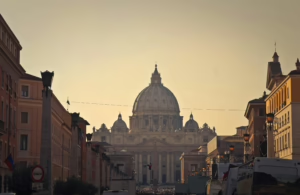A Budget Traveler’s Guide to Moving Around Holland by Public Transport
Whether you’re a student on a semester abroad or a seasoned nomad exploring every nook and cranny, navigating Holland without a car is not only feasible, it’s downright delightful. I just returned from a 10-day solo trip in the Netherlands thanks to Trip.com and I will tell you my experiences as a solo traveler and how to visit all the best places staying on a budget.
I will begin with the first information I searched when I decided to travel to Holland. How can I move around all the places without spending a lot? So I am writing this article.
This guide equips you with the knowledge and savvy to become a public transport pro in Holland. I’ll delve into the system’s intricacies, and explore the cost-saving hacks I learned.
Gearing Up: Essential Tools for the Public Transport Trek
1. The OV-chipkaart: Your Ticket to Dutch Mobility

Think of the OV-chipkaart (pronounced oh-veh-KEEP-kaart) as your magic portal to Dutch public transport. This rechargeable card allows you to tap in and out of buses, trams, metros, and even trains. It’s available in anonymous and personalized versions. The anonymous option is quicker to acquire if you are a traveler, but the personalized one unlocks discounts and travel passes — perfect for extended stays, but not necessary if you want to stay on a budget.
Tip: Purchase your OV-chipkaart at train stations, convenience stores, or online. I bought it on the Amsterdam Centraal Train Station Machine, I charged it €20, but I used it only once and it saved me because it was the only card at that particular moment to work inside the bus machine. Why did I use it only once? This is another story, so be sure to follow me, because I will write about it.
Always tap your card on the designated readers when entering and exiting public transport to register your journey and avoid fines. Running out of credit mid-tram ride is an experience best avoided! You can check your residual credit every time you tap it.
Expense:
- Anonymous OV-chipkaart: €7 (one-time fee and the card is valid for 5 years) + Top-up amount (varies depending on travel plans).
- Personalized OV-chipkaart: €20 (one-time fee with €10 credit) + Top-up amount.
I discovered that every time you use it there is a fee of around €1. So if you want to save money, use it only for emergencies.
2. Travel Apps: Your Digital Dutch Compass
In the age of smartphones, there’s an app for everything, and public transport is no exception. Download the official NS app (for trains) and the 9292 app (for all public transport options). These apps provide real-time schedules, journey-planning tools, and even handy disruption alerts.
I downloaded only the first one because Google Maps is very good in the Netherlands. I checked it for trains and it signs also the platform of my trains. The NS app was good for another inconvenience that occurred on my last day.
Expense: Free (both apps)
Pro Tip: Bookmark the 9292 website on your phone’s browser for easy access even without an internet connection.
Choosing Your Chariot: A Breakdown of Public Transport Options
Holland boasts a well-integrated (I can say one of the best) public transport system, with each mode having its strengths:

Trains
The workhorse of Dutch travel, connecting major cities and towns efficiently. Perfect for longer distances or when punctuality is paramount. Around 2 hours you can go to all the major cities of the Netherlands. Consider intercity single tickets or explore regional passes for multiple journeys within a specific area. Regional passes are the cause why I bought the OV-chipkaart, but I used it only once. I discovered them 20 minutes after the OV-chipkaart on another ticket machine (the white and blue ones).
Personal Experience Tip: you can’t use the OV-chipkaart credit to buy the train ticket on ticket machines.
Expense: Varies depending on distance and ticket type. Intercity single tickets start around €10–€20.
Buses
A comprehensive network serves both cities and rural areas. Great for shorter trips or reaching off-the-beaten-path destinations. I loved going by bus because I saw all the Netherlands‘ magic landscapes and sunsets.
Expense: Varies depending on distance and zone traveled. Single tickets start around €2. If you know that you will visit all day a city, a 24-hour ticket is the better choice. It costs €9 in Amsterdam and €7 in The Hague and you can use all the buses, trams and metros.
Trams and Metros
Found primarily in larger cities like Amsterdam, Rotterdam, and The Hague (Den Haag). Ideal for swift inner-city commutes.
Expense: Similar to bus fares, with single tickets starting around €2.
Travel Hacks for the Savvy Nomad
- Embrace the Daluren: Off-Peak Travel Perks
The Dutch have a concept called “daluren” (pronounced dah-LOOR-en), which translates to “off-peak hours.” Trains generally offer cheaper fares during these times, typically weekdays before 06:30 and after 09:00, weekends, and evenings. Plan your journeys accordingly to maximize your savings.
- Group Power: Sharing is Caring (and Cost-Effective)
Traveling with a buddy or a small group? Look into group tickets or passes, which can offer significant discounts compared to individual fares.
- Consider Regional Passes: Your Multi-Modal Ticket to Freedom
If you plan on exploring a specific region extensively, consider regional travel passes like the “Dagkaart” (Day Ticket) or “Roverkaart” (Regional Rover Ticket). These offer unlimited travel within a designated area for a set period. I bought all the variants to visit the north of Amsterdam and on the first day, I bought the Travel Day Ticket, the most expensive ticket, but allows you to use ALL the public transportation of Holland for an entire Day. You are thinking it is an expensive move I did, but it wasn’t because I went to a place located in the north of the Netherlands (a mysterious town I will tell more about in the next articles) and the Holland Travel Day Ticket costs cheap that each ticket of train and bus to create a roundtrip to this town.
I have some advice for you based on my experience: Economic inconveniences are always to consider if it is the first time you visit a new place, but studying and making a decision when you have all the correct and complete information, can save you! (money and time as well).
If you desire to become a Solo Traveler you must consider all kinds of inconveniences, mostly the economic ones.
- Embrace the Bicycle: A Dutch Tradition and Budget Boon
The Netherlands is a cycling paradise. Renting a bike for shorter distances can be a cost-effective and truly Dutch way to explore. I haven’t experienced a bike ride, I will rent a bike the next time!
Beyond the Budget: Bonus Tips for a Smooth Public Transport Journey
- Validate Your OV-chipkaart: Always tap your card on the designated readers when entering and exiting public transport to register your journey and avoid fines.
- Mind the Language Gap: While English announcements are becoming increasingly common, basic Dutch phrases like “Dank u wel” (Thank you) and “Excuseer mij” (Excuse me) go a long way in showing courtesy to fellow passengers and even staff. The Dutch people are lovely.
- Respect the Rush Hour: Just like any major city, Dutch public transport can get crowded during peak hours. Be prepared for standing room only and adjust your travel plans if possible to avoid the rush.
- Pack Light, Travel Smart: Remember, you’ll be lugging your belongings around, so pack light for a smoother journey, especially on crowded trams and buses. I will write an article on how I managed this common problem that everyone has, especially when you travel alone.
Most popular:
Most Recent:
The Final Verdict: Public Transport in Holland — A Budget Traveler’s Dream
By embracing the efficient public transport network and employing these travel hacks, you can conquer the canals of Holland without breaking the bank. Remember, the journey itself is part of the adventure. So, sit back, relax, and enjoy the ever-changing Dutch landscape as you zip past your chosen mode of public transport.
Bonus Tip: Feeling adventurous? Consider a long-distance bus journey with companies like Flixbus. While not technically “public transport” (you won’t use your OV-chipkaart), they offer surprisingly comfortable and budget-friendly options for traveling between major Dutch cities and even connecting to neighboring countries. Belgium is very near (I will surely consider it the next trip).
With a little planning, resourcefulness, and the knowledge contained within this guide, you’re well on your way to becoming a public transport pro in Holland. Now, get out there, explore, and discover the magic of this captivating country, then come back and tell me your experiences! I will wait for you in the comments.










